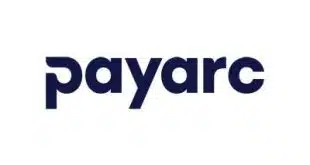Questions abound about factors like adoption and technical requirements. But staying on the sidelines is not a wise option.
Bringing the U.S. payments industry into line with that of other advanced economies such as the United Kingdom and Europe has been a priority for the Federal Reserve, and next year we are going to see some real movement on this front when FedNow goes live.
Currently, real-time payment and settlement capabilities are not ubiquitous. When it launches, FedNow will open up a nationwide real-time payment network available to all the banks that are currently members of the Fed.
It will likely be the biggest change to the payments environment in this country since the introduction of the automated clearing house (ACH) network, the electronic funds-transfer system we have been using since 1974.
Regional and community banks are set to gain the most from FedNow. The majority of these institutions aren’t members of The Clearing House, the New York City-based company owned by America’s biggest banks and operator of the 5-year-old Real Time Payments (RTP) network. So they don’t have access to a real-time network.
However, their customers want the ability to move money in real time across the United States for a variety of purposes, from interpersonal payments to paying bills and making payroll payments. They will also want to be able to receive Federal payments, including benefits, instantly once the government is ready to enable the capability.
To that end, FedNow will bring core clearing and settlement capabilities to a number of different transaction types. It will also support ISO 20022, which has become the de facto global standard for payments messaging. FedNow will have a number of features that will ensure data security and combat fraud, while offering consumers a better experience, as they’ll be able to transact in real time 24 hours a day, seven days a week.
Adoption Questions
FedNow is due to go live at some stage in 2023. The launch will happen in several phases, with additional features being introduced continuously. At the moment, the plan is that there will be some testing in a sandboxed environment some time around September, when stakeholders will be able to check that their systems are ready for the implementation.
However, there are still some questions regarding how quickly FedNow is likely to be adopted.
The Clearing House’s RTP service launched in 2017 and saw support grow slowly but steadily, so it may be some time before we see FedNow being widely adopted in the U.S. Ultimately, though, consumer demand will be the major driving factor. The Covid-19 pandemic has accelerated the decline in the usage of cash, with more people wanting to avoid handling physical money. So the desire to use real-time payment processing has increased.
The Federal Reserve is not requiring its members to commit to FedNow just yet. Many banks are likely to make their strategic decisions based on what they perceive to be likely consumer demand. But at a time when many banks are looking to modernize and bring their legacy systems into line with cutting-edge competitors such as neobanks, there’s a massive opportunity to use FedNow as a catalyst for digitalization.
Consumers have become used to having everything they want, right now. Goods can be delivered to their door in minutes. Digital services and information can be accessed instantly. It’s only natural that consumers should want to have the payment services they use brought into line with these principles.
They shouldn’t have to wait for payments to clear when the goods and services purchased are available instantaneously. That’s a dislocated experience. So the demand for real-time settlement is certainly there, and banks that adopt FedNow will dramatically improve the payment experience for their customers.
Getting Ready
Preparing to join FedNow will undoubtedly be a complex task. And, while the bulk of the work will need to be done ahead of the go-live date, there is also the maintenance of the system to consider, in terms of ensuring ongoing compliance and technical adherence.
Banks that are planning to join FedNow will be at varying stages of readiness. One of the key areas of concern will be the integration of real-time capabilities into existing infrastructure. Many banks will need to modernize and digitalize their approach to connect to FedNow.
They’ll need to look at using API-based platforms for ensuring the real-time exchange of information. This will enable them to embed the payment experience into other channels so it flows along with what the customer is doing. Infrastructure must be reliable and secure, with high levels of resilience and zero downtime to ensure a true 24/7 service.
While the Federal Reserve is doing what it can to ease the path for banks—for example, by offering the chance to enroll as a “receive only” participant—many institutions will need to look outside of their organizations for help. Forming strong technical partnerships will be the key to success. Banks that act fast and outsource the integration and management of the process to a trusted partner can be ready to go live at launch.
In summary, wait-and-see is the wrong approach to FedNow.
Banks should be aware that the approach they take to implementing FedNow needs to be streamlined and cost-effective. In a challenging economy, internal resources are likely to be stretched, and there may be a temptation to play the waiting game. But the cost of doing nothing will be considerable.
There is a lot to be gained from embracing FedNow. The demand for real-time payment and settlement is clear, and customers who don’t have access to this service through their bank could very well take their business elsewhere. Now is the time to be bold. Don’t wait to see what everyone else does.
—Dave Scola is U.S. chief executive at Form3.




